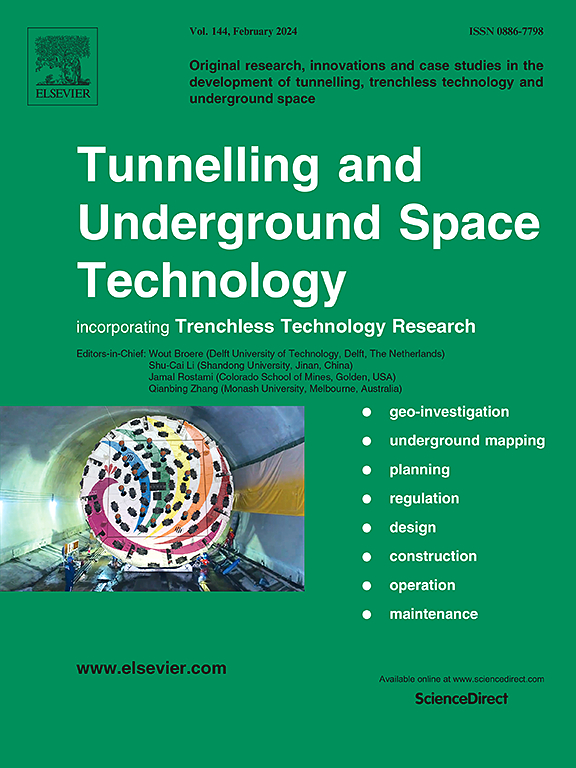Correlating permeability coefficients of fractured rock mass in unidirectional and radial flow Configurations: Method and Application
IF 6.7
1区 工程技术
Q1 CONSTRUCTION & BUILDING TECHNOLOGY
引用次数: 0
Abstract
Groundwater flow configurations typically include unidirectional and radial flow and the flow field in rock mass are usually influenced by the flow configuration obviously. In this study, a calculation equation of radial flow permeability coefficient tensor was proposed, based on the calculation method of unidirectional flow permeability coefficient tensor and the correlation between rectangular and cylindrical coordinate systems. A correlation between unidirectional and radial flow permeability coefficient was established based on Darcy’s law, the equivalent permeability coefficient equation under radial flow, and the correlation of equivalent hydraulic aperture between unidirectional and radial flow. The core for the correlation was the relation of hydraulic apertures in terms of the fracture roughnesses in the two flow configurations. For an underground water-sealed storage cavern, the permeability coefficients of different flow configurations in the engineering zone were determined, and the numerical simulation of water inflow was carried out. The results indicated that the permeability coefficient of unidirectional flow was greater than that of radial flow. Water inflow with permeability coefficient partition assignment based on the flow configuration was higher than that with entire radial flow permeability coefficient. In addition, a calculation method of the water inflow into cavern considering permeability coefficient partition was established and verified by the numerical simulation.
求助全文
约1分钟内获得全文
求助全文
来源期刊

Tunnelling and Underground Space Technology
工程技术-工程:土木
CiteScore
11.90
自引率
18.80%
发文量
454
审稿时长
10.8 months
期刊介绍:
Tunnelling and Underground Space Technology is an international journal which publishes authoritative articles encompassing the development of innovative uses of underground space and the results of high quality research into improved, more cost-effective techniques for the planning, geo-investigation, design, construction, operation and maintenance of underground and earth-sheltered structures. The journal provides an effective vehicle for the improved worldwide exchange of information on developments in underground technology - and the experience gained from its use - and is strongly committed to publishing papers on the interdisciplinary aspects of creating, planning, and regulating underground space.
 求助内容:
求助内容: 应助结果提醒方式:
应助结果提醒方式:


